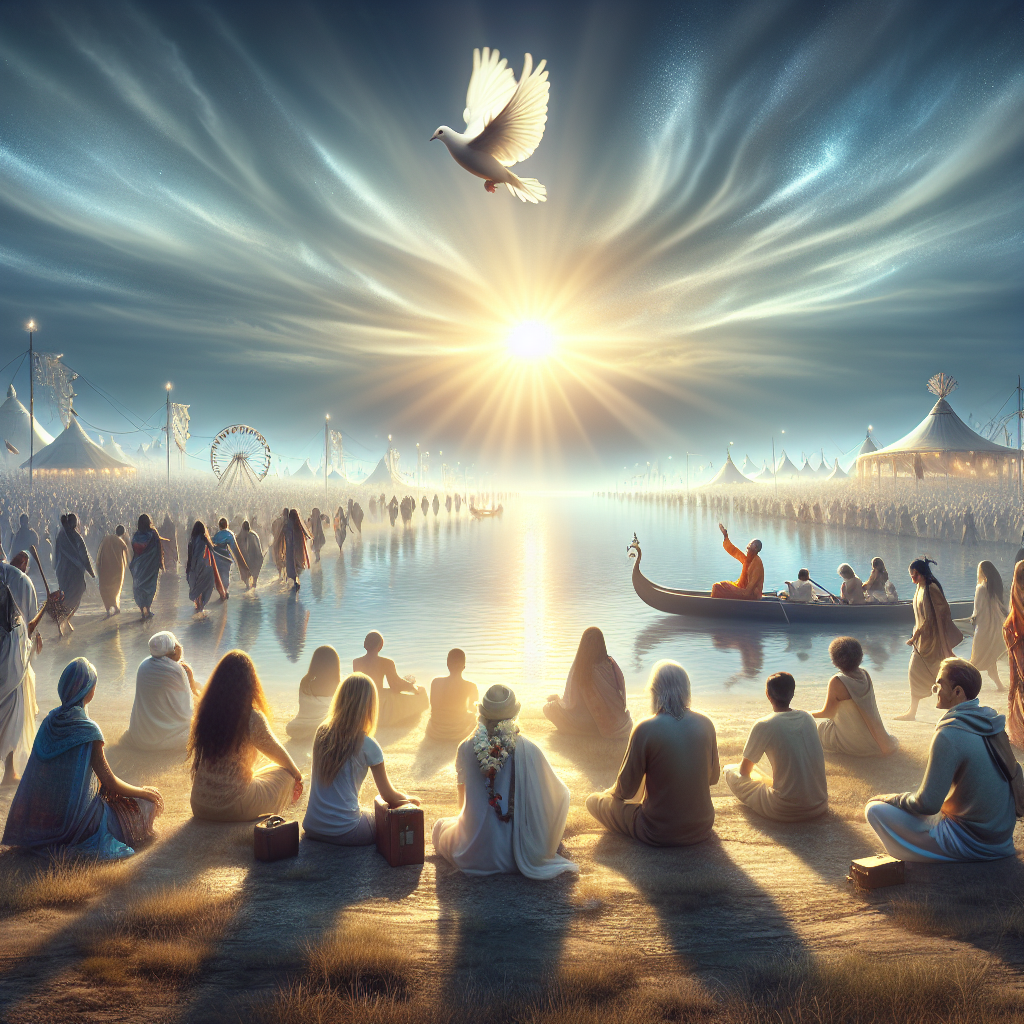[ad_1]
Pilgrimage and Peace: The Transformative Power of Mahakumbh
In the ancient context of religious and spiritual traditions, pilgrimage has always held a revered place, symbolizing a journey not only through physical landscapes but also through the intricate landscapes of the soul. Among these sacred odysseys, the Mahakumbh stands out as one of the most significant and transformative communal experiences, weaving together the ideals of peace, spirituality, and unity.
The Mahakumbh: An Overview
The Mahakumbh Mela, held approximately every 12 years at four sacred river confluences in India—Haridwar, Ujjain, Nashik, and Allahabad (Prayagraj)—is the largest religious gathering on Earth. The festival unfolds around the ritualistic bathing in the holy rivers, believed to cleanse the soul and wash away sins. This grand event, which attracts millions of devotees, stands as a testament to the enduring legacy of faith and devotion.
The origins of Kumbh are steeped in mythology. According to Hindu lore, the Kumbh originates from the tale of the Samudra Manthan—the churning of the ocean by the gods and demons to retrieve the nectar of immortality. The drops of this celestial nectar fell to Earth at the four locations where the Kumbh is celebrated. This mythos imbues the event with a profound sense of holiness and purpose, driving people from all walks of life to participate.
Pilgrimage as a Path to Peace
The Mahakumbh transcends its religious connotations; it serves as a powerful vehicle for peace and compassion. In an age increasingly marked by conflict and division, the Kumbh Mela embodies the possibility of collective harmony. Each participant, regardless of their backgrounds—caste, creed, or nationality—comes together in a shared experience of spirituality.
As people gather in the vastness of the Mela, they are reminded of their common humanity, which supersedes personal differences. Rituals, prayers, and spiritual discourse encourage a deep sense of unity and shared purpose. These moments of connection create an atmosphere filled with peace, promoting the idea that differences can be bridged through collective devotion.
Transformational Experiences
Many pilgrims report that the experience of participating in the Mahakumbh transcends mere spiritual cleansing—it often leaves a lasting impact on their psyche and worldview. The act of pilgrimage is known to induce transformative perceptions and awaken deeper insights. For many, the event acts as a catalyst for change, allowing individuals to reflect on their lives, priorities, and relationships.
The pilgrimage encourages introspection, fostering a sense of inner peace. Visitors often describe feelings of serenity and fulfillment arising from communal prayers, offerings, and interactions with fellow pilgrims. These connections often foster a liberating sense of empathy, reinforcing the notion that humanity thrives on connection, understanding, and shared experiences rather than conflict.
The Role of Community and Service
Another critical aspect of the Mahakumbh is the spirit of service. The sheer scale of the gathering ignites a unique ecosystem of collaboration. It mobilizes thousands of volunteers who extend their hands to help every whoever is in need, from providing food to medical assistance. These acts of service and voluntarism contribute to an atmosphere charged with goodwill, affirming the human capacity for kindness and compassion that often brings peace to turbulent times.
Moreover, the presence of various spiritual leaders and practitioners fosters dialogues around peace, sustainability, and social justice. Such engagements transcend the physical act of pilgrimage, creating platforms for discourse and solutions to contemporary societal issues.
Conclusion: A Symbol of Hope
As we navigate through an increasingly chaotic world, the Mahakumbh Mela stands as a beacon of hope and peace. This monumental gathering reminds us of the transformative power of collective spiritual practice. In its essence, the Mahakumbh is not merely a pilgrimage; it is an experience that embodies the potential for healing, connection, and unity.
In conclusion, the Mahakumbh serves as a powerful reminder that, through shared faith and collective resolve, humanity can transcend its divisions and embrace a more peaceful existence. The transformative power of pilgrimage persists, ensuring that the spirit of peace flourishes, invigorating individuals and communities alike in their quest for a more harmonious world.
[ad_2]

